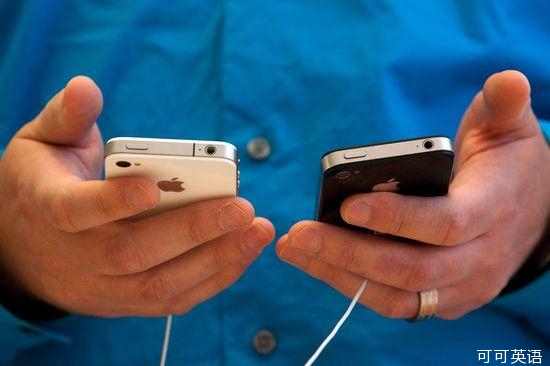
Apple Inc. is working on a lower-end iPhone, according to people briefed on the matter, a big shift in its corporate strategy as its supremacy in smartphones has slipped.
據(jù)知情人士說(shuō),蘋(píng)果公司(Apple Inc.AAPL+0.27%)正在開(kāi)發(fā)一款低端iPhone。這是蘋(píng)果在其智能手機(jī)至高地位出現(xiàn)下滑之際對(duì)其公司戰(zhàn)略的一次重大調(diào)整。
While Apple has explored such a device for years, the plan has been progressing and a less expensive version of its flagship device could launch as soon as later this year, one of the people said.
知情人士中的一位說(shuō),蘋(píng)果為這樣的手機(jī)探索過(guò)多年,該計(jì)劃一直在推進(jìn),一款比旗艦機(jī)更便宜的iPhone最早有望在今年晚些時(shí)候推出。
The cheaper phone could resemble the standard iPhone, with a different, less-expensive body, one of the people said. One possibility Apple has considered is lowering the cost of the device by using a different shell made of polycarbonate plastic; in contrast, the iPhone 5 currently has an aluminum housing. Many other parts could remain the same or be recycled from older iPhone models.
位知情人士說(shuō),低價(jià)iPhone可能與標(biāo)準(zhǔn)版相似,只是采用了一個(gè)不同的、更便宜的機(jī)身。蘋(píng)果考慮過(guò)的一種可能性,是通過(guò)使用聚碳酸酯塑料材質(zhì)的外殼來(lái)降低手機(jī)的價(jià)格。相比之下,iPhone 5目前采用的是鋁制外殼。其他很多零部件可能保持一致,或者從老款iPhone手機(jī)回收利用。
Apple could decide not to move forward with the device. A spokeswoman for the Cupertino, Calif., company declined to comment.
總部位于加州庫(kù)珀蒂諾的蘋(píng)果有可能決定不再繼續(xù)開(kāi)發(fā)這款手機(jī)。蘋(píng)果公司一位發(fā)言人不予置評(píng)。
The move towards multiple iPhone models is new territory for Apple. Under former Chief Executive Steve Jobs, Apple historically prided itself on prioritizing profits over scale and offered a relatively small number of products targeted at the high end.
同時(shí)銷售多款iPhone對(duì)于蘋(píng)果來(lái)說(shuō)還是新領(lǐng)域。在前首席執(zhí)行長(zhǎng)喬布斯(Steve Jobs)領(lǐng)導(dǎo)下,蘋(píng)果一直以更重利潤(rùn)而非規(guī)模而引以為豪,并用數(shù)量相對(duì)較少的產(chǎn)品瞄準(zhǔn)高端人群。
In more recent years─and especially since Tim Cook took the reins as CEO in August 2011─that has started to change. In October, Apple unveiled a smaller iPad, dubbed the iPad Mini, to go alongside its bigger iPad tablets.
知情人士說(shuō),蘋(píng)果公司正在開(kāi)發(fā)一款低端iPhone。近年來(lái),特別是庫(kù)克(Tim Cook)于2011年8月接過(guò)CEO一職之后,情況開(kāi)始發(fā)生變化。2012年10月,蘋(píng)果推出名為“iPad Mini”的小尺寸iPad,跟尺寸更大的iPad一起出售。
Still, the company has sold only one main new iPhone model, with different storage capacities, at a time since launching the smartphone in 2007. Today the iPhone is Apple's chief revenue driver, with sales of iPhones and related products and services accounting for 48% of revenue in the quarter ended in September.
但是,自從2007年推出iPhone以來(lái),蘋(píng)果一次只出售一種新款iPhone,只是存儲(chǔ)容量不同。iPhone是蘋(píng)果目前最大的收入來(lái)源,在截至2012年9月的季度內(nèi),iPhone及相關(guān)產(chǎn)品、服務(wù)的銷售額占蘋(píng)果收入的48%。
Apple has been considering a less-expensive iPhone since at least 2009 to grab market share and hook people on the brand, said people familiar with the efforts. Before the launch of the iPhone 4 in mid-2010, the company developed designs for cheaper phones that were very similar to the latest iPhone but had a less expensive back and sides, one of the people said.
知情人士說(shuō),至遲在2009年的時(shí)候,蘋(píng)果就已經(jīng)開(kāi)始考慮推出廉價(jià)版iPhone,以?shī)Z取市場(chǎng)份額、吸引新消費(fèi)者。一位知情人士說(shuō),在2010年中發(fā)布iPhone 4時(shí),蘋(píng)果制作了廉價(jià)版iPhone的設(shè)計(jì)圖,樣子同最新款iPhone相似,但背板和邊框更加便宜。
Apple tabled the plan as some executives worried a second iPhone would complicate its manufacturing processes. The company decided to keep older iPhone models on sale for less, a strategy that didn't require designing new products.
蘋(píng)果提出這一計(jì)劃后,一些高管擔(dān)心,推出第二款iPhone可能會(huì)使蘋(píng)果的制造流程變得復(fù)雜。蘋(píng)果決定以較低的價(jià)格繼續(xù)出售較早型號(hào)的iPhone,該戰(zhàn)略使蘋(píng)果不需要設(shè)計(jì)新的產(chǎn)品。
But Apple now faces greater pressure to make the iPhone more affordable. An onslaught of lower cost rivals powered by Google Inc.'s Android operating system are gaining market share.
但是如今,蘋(píng)果面臨著更大的壓力,需要讓iPhone的價(jià)格更能為消費(fèi)者所接受。搭載谷歌公司(Google Inc.GOOG-0.20%)安卓(Android)操作系統(tǒng)的低價(jià)手機(jī)正在獲得更多的市場(chǎng)份額。
In the 2012 third quarter, Apple held only 14.6% of worldwide smartphone shipments, down from a peak of 23% in the fourth quarter of 2011 and the first quarter of 2012, according to IDC.
根據(jù)IDC的數(shù)據(jù),2012年第三季度,蘋(píng)果在全球智能手機(jī)市場(chǎng)出貨量中的份額僅為14.6%,低于2011年第四季度和2012年第一季度23%的峰值。
Samsung Electronics Co.'s share, meanwhile, rose from 8.8% to 31.3% from the third quarter of 2010 to the third quarter of 2012. The Korean electronics maker on Tuesday said it capped its best year ever with another record quarterly profit, adding that it expects operating profit of $8.1 billion to $8.5 billion for the three months that ended in December.
與此同時(shí),三星電子(Samsung Electronics Co.)2012年第三季度的市場(chǎng)份額增長(zhǎng)到了31.3%,高于2010年第三季度的8.8%。這家韓國(guó)電子產(chǎn)品制造商周二表示,該公司的季度利潤(rùn)將再創(chuàng)新高。三星補(bǔ)充說(shuō),預(yù)計(jì)截至12月的三個(gè)月?tīng)I(yíng)業(yè)利潤(rùn)將會(huì)在81億美元到85億美元之間。
While the iPhone remains the top-selling smartphone in the U.S., Apple's share of the high-end cellphone market has been falling fast in China and remains low in other emerging markets.
盡管iPhone在美國(guó)仍然是最暢銷的智能手機(jī),但蘋(píng)果在中國(guó)高端手機(jī)市場(chǎng)中的份額一直在大幅下降,在其他新興市場(chǎng)的份額仍然很低。
The iPhone 5 without a wireless contract starts at $649 in the U.S. on Apple.com, and can cost even more overseas. That's out of reach for many customers in countries where carriers don't help cover the cost of the phone and where Android phones with similar capabilities can cost less.
蘋(píng)果公司網(wǎng)站上銷售的iPhone 5非合約機(jī)在美國(guó)起價(jià)為649美元,在海外的價(jià)格更高。在一些國(guó)家,運(yùn)營(yíng)商不負(fù)擔(dān)手機(jī)的成本,且擁有同樣功能的安卓手機(jī)售價(jià)更低,因此iPhone 5的價(jià)格對(duì)許多消費(fèi)者來(lái)說(shuō)難以接受。
In the U.S., the iPhone starts at $199 with a two-year wireless contract, while older models are available for $99 or for free with a two-year contract.
在美國(guó),iPhone兩年期合約機(jī)的起價(jià)為199美元,較早型號(hào)的iPhone兩年期合約機(jī)售價(jià)為99美元,或是由無(wú)線運(yùn)營(yíng)商免費(fèi)提供。
Apple's stock has fallen 25% since it reached an all-time high of $702.10 in September as investors worry competitors are gaining ground. On Tuesday, Apple's shares closed 4 p.m. trading at $525.31.
自去年9月達(dá)到702.10美元的歷史高點(diǎn)之后,蘋(píng)果的股票已經(jīng)下跌了25%,投資者擔(dān)心,競(jìng)爭(zhēng)者正在獲得更多市場(chǎng)份額。周二,蘋(píng)果的股票收盤(pán)價(jià)格為525.31美元。
A less-expensive iPhone risks crimping the company's profit margins, which executives have been loath to sacrifice. Even small changes in margins often sway investors.
低價(jià)iPhone可能會(huì)影響公司的利潤(rùn)率,這是公司高管不愿意付出的代價(jià)。即使是利潤(rùn)率發(fā)生較小變化,常常也會(huì)把投資者嚇跑。
Gene Munster, an analyst with Piper Jaffray, said that a less expensive iPhone won't necessarily hurt Apple's overall profit margin if it attracts buyers who haven't bought iPhones before and not those who would have been willing to purchase the higher-end device.
派杰公司(Piper Jaffray)的分析師蒙斯特(Gene Munster)說(shuō),如果低價(jià)iPhone吸引的是沒(méi)有買過(guò)iPhone的消費(fèi)者,而不是那些本來(lái)打算購(gòu)買高端iPhone的消費(fèi)者,那么更便宜的iPhone并不一定會(huì)傷害蘋(píng)果整體利潤(rùn)率。


